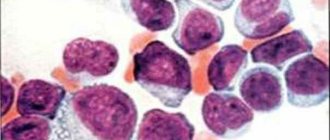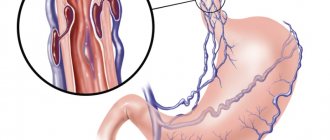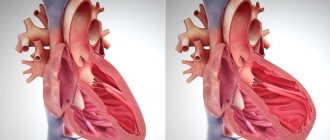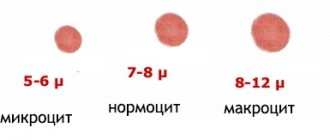An optical apparatus and the diagnostic method of fibrogastroduodenoscopy help determine the amount of blood loss recorded in the organs of the upper gastrointestinal tract. This is facilitated by the classification of bleeding according to Forest. This gradation, as you will see, is quite simple and convenient. In particular, it helps doctors notice all pathological changes in blood vessels (both venous and arterial), determine the stage of the disorder, and the volume of blood that the patient loses. We will talk to you in more detail about gastric bleeding and their classification later.
What causes such bleeding?
Before we look at Forest’s classification of bleeding, let’s talk in more detail about them themselves.
What is the cause of bleeding in the upper gastrointestinal tract? Several points can be highlighted here:
- Internal organ injuries.
- Intoxication of the body.
- Inflammatory processes.
- Damage to the gastrointestinal tract by infection.
- Ulcer or tumor of the stomach, esophagus or duodenum.
- A rarer cause is hereditary pathologies affecting blood vessels and blood. In particular, Rendu-Osler disease, hemophilia.
Additional Research
In addition to FGDS, the gastroenterologist will need other data about the patient’s well-being. A clear diagnosis will be established after several step-by-step studies. The doctor needs the readings to complement each other and create an overall picture.
A comprehensive study of the whole organism is necessary.
- Study of the patient's blood composition. A biochemical blood test is needed.
- Composition of urine.
- Medical history (anamnesis), as well as information about the presence of other diseases.
- MRI diagnostics of all internal organs.
If lethargy, pallor, and clouding of consciousness are observed - these are clear signs of blood loss, the patient’s blood pressure and hemodynamics of the heart must be monitored. Those diagnosed with any heart disease undergo fibrogastroscopy under the supervision of an experienced cardiologist.
Main symptoms
It is important for the patient to know not only the Forest classification of bleeding, but also the symptoms of this pathological condition. These will include the following:
- Blood streaks that will be observed in the vomit.
- Uncharacteristic shade of vomit. Most often the color of coffee grounds.
- Loss of strength, chronic feeling of weakness.
- Constant feeling of thirst.
- Low blood pressure.
- Dizziness.
- “Flies are flying before my eyes.”
- Pale skin.
- Tachycardia.
- Black stool.
Danger to the patient
Along with Forest's classification of bleeding, many are interested in how dangerous this pathological condition is for humans. If such blood loss occurs for the first time in a patient, then statistics will show a small risk - 10% of cases are fatal. But recurrent bleeding in the upper gastrointestinal tract is already dangerous. There are 50% of deaths from all diagnosed cases. Moreover, the age of the patients does not have a significant impact on this figure.
However, it is noted that the risk of bleeding in the upper gastrointestinal tract is most typical for older people. The reason is that they are more likely to develop serious complications of any pathological processes in the body. And most often it is the upper parts of the digestive system that are affected - this is 70% of all cases.
Sequence of assistance
If the patient received anticoagulants before bleeding occurred, they should, in most cases, be discontinued. Assess the severity of the condition and the estimated amount of blood loss based on clinical signs. Vomiting blood, loose stools with blood, melena, changes in hemodynamic parameters - these signs indicate ongoing bleeding. Arterial hypotension in the supine position indicates large blood loss (more than 20% of the blood volume). Orthostatic hypotension (a decrease in systolic blood pressure above 10 mm Hg and an increase in heart rate by more than 20 beats per minute when moving to a vertical position) indicates moderate blood loss (10-20% of blood volume);
In the most severe cases, tracheal intubation and mechanical ventilation may be required before endoscopic intervention. Provide venous access with a peripheral catheter of sufficient diameter (G14-18); in severe cases, install a second peripheral catheter or perform catheterization of the central vein.
Take a sufficient volume of blood (usually at least 20 ml) to determine the group and Rh factor, combine blood and conduct laboratory tests: general blood count, prothrombin and activated partial thromboplastin time, biochemical parameters.
Diagnostics
Forest's classification of gastric bleeding is used by doctors specifically when diagnosing such cases. The doctor begins his work with the following:
- The patient's medical history is collected. The doctor analyzes the symptoms of the pathological process.
- First of all, laboratory methods are prescribed to study the patient’s health status - a general analysis of a blood sample, a study of its coagulability.
- The patient is prescribed FGDS - fibrogastroduodenoscopy. If a person is admitted to the hospital with gastric or intestinal bleeding in critical condition, then this diagnostic method will be the only one for him.
Forest's classification for gastrointestinal bleeding will explain the examination results obtained using the FGDS technique. Its recognized effectiveness is confirmed by several factors:
- Helps document an episode of gastrointestinal bleeding.
- Determines the location of the damaged vessel.
- Sets the intensity of bleeding. And this helps specialists understand how much blood a person has lost.
Another plus is the convenience of the procedure. It is performed both at the patient’s bedside and in a specialized treatment room.
Analyzing the endoscopic classification of bleeding according to Forest, I would like to draw the reader’s attention to another useful function of FGDS. The technique allows you to influence the defect of a “leaky” vascular wall:
- clipping;
- coagulation;
- fibrin filling;
- injecting the damaged area with drugs that stop bleeding.
How is diagnosis carried out?
If a person is suspected of having gastric bleeding, specialists use an integrated approach to diagnose it.
That means:
- Signs of arterial bleeding and first aid
- collecting anamnesis, that is, history, disease;
- identifying early signs of gastric bleeding;
- laboratory testing of blood to determine its clinical indicators (primarily, determining the level of hemoglobin and studying the properties of coagulation);
- conducting instrumental examination using, first of all, endoscopic methods (FGDS).
Carrying out fibrogastroduodenoscopy (FGDS) allows you to establish the presence of gastric bleeding, determine the location of the damaged vessel and the degree of intensity of blood loss.
Contraindications for fibrogastroduodenoscopy
The Forrest classification of ulcerative bleeding is thus applied only on the basis of diagnostic data obtained by fibrogastroduodenoscopy. This gradation cannot explain the results of other studies.
Contraindications to EGD therefore make it impossible to use the classification for abnormal gastrointestinal bleeding in an individual patient. These include the following:
- Stroke.
- Acute stage of myocardial infarction.
- State of agony.
Indications for use
Indications for performing FGDS are the presence of the following diseases in the patient's medical history:
- peptic ulcer of the stomach and/or duodenum;
- malignant forms of cancer, in which the disintegration of neoplasms is observed;
- erosive gastritis;
- Randu-Osler syndrome (hereditary pathology in which defective blood vessels are formed);
- oncological and genetic pathologies of the circulatory system.
Categorical contraindications for endoscopic examination are the acute period of myocardial infarction, stroke, and a state of agony.
Classification of bleeding according to Forest, its meaning
This classification was developed by Dr. Forest back in 1974. It was intended for the gradation of bleeding, which was established during fiberoscopy of the gastric region and duodenum. The basis for the classification was clinical studies that were directly conducted by Forest himself.
The significance of gradation today is that it has introduced into medical practice that unified system for drawing up a protocol, which is done by a specialist after each FGDS procedure. In particular, this is a technique for visualizing a pathological focus of bleeding. It is important to highlight that it helps to choose the most appropriate treatment tactics for the patient, which directly affects the speed and quality of his recovery.
Representation of Forest classification
Let us present to readers the classification of ulcerative bleeding according to J. A. F. Forrest.
The first group is F1 (bleeding in the active stage). Within it, two additional categories will be distinguished:
- F1a - in this case, blood will flow out of the damaged vessel in a stream (sometimes in a pulsating stream).
- F1b - here the blood mass flows out of the vessel drop by drop. Another name is vessel sweating.
The second group is F2. In these cases, the bleeding has already stopped. The group also has its own subcategories:
- F2a - the device detects a thrombosed vessel at the bottom of the ulcer. Diameter - less than 2 mm.
- F2b - a fixed blood clot was found at the bottom of the ulcer. The diameter here will be more than 2 mm.
- F2c - black spots are visible at the bottom of the ulcer. This is what a network of small, already thrombosed vessels looks like.
The last group is F3. There are no subcategories here - this is how the specialist will indicate the result of the examination, in which no gastric or intestinal bleeding was detected (the bottom of the ulcer is clean).
Thus, the classification makes it possible to determine both the stage of pathological bleeding and its activity. The peculiarity of the gradation is that it helps to choose the right therapy for a particular patient:
- If blood loss is observed, the specialist first takes measures for hemostasis (stopping bleeding).
- If vascular bleeding has stopped, then help to the patient is aimed at replenishing the volume of fluid lost by his body, restoring normal blood counts, blood pressure, and pulse.
- If bleeding was not detected, then this fact indicates either the absence of defects in the vascular wall or the healing stage.
Gastric resection
If type F1a is established - a pulsating stream, blood quickly fills the gastrointestinal tract. In some cases, self-medication should not be allowed. You need to call an ambulance immediately. Giant ulcers, which are more than 2.5-3 cm in diameter, and peptic ulcers are operated on urgently.
The tactics of surgeons when preparing for surgery consists of three points:
- Forrest group definitions.
- Carrying out early endoscopy, which determines the level of damage to the mucosa and the degree of risk.
- Determining the volume and timing of the operation. It is determined what kind of resection is needed: distal resection, proximal, or gastrectomy.
In cases where the ulcer is dangerous and there is a risk of repeated intense bleeding, a planned distal gastrectomy is prescribed. The operation is not dangerous. During this procedure, 2/3 of the organ, the pylorus, is removed. The remaining stump is connected to the small intestine or duodenum. The operation is possible only after the bleeding has completely stopped.
Total resection or gastrectomy with resection is the removal of more than 90% of the organ tissue. Prescribed after endoscopy when repeated ulcerations were observed, large volumes of blood were lost, and pyloric stenosis was found.
Further treatment
The diagnostic results allow you to choose the optimal treatment method for a particular patient:
- Conservative. This is drug therapy.
- Operational. This is a surgical intervention of various specifications and scope - from excision and suturing of the ulcer itself to resection of the gastric region.
Today, as progress develops, Forest's classification is used in various modifications and variations. However, the entire system of grading gastrointestinal bleeding is still aimed at determining the activity of the pathological process and selecting the best treatment option for the patient. Classification helps to identify the likelihood of relapse of the pathology, which can be fatal for the patient.
Timerbulatov V.M., Fayazov R.R., Sagitov R.B., Yamalov R.R.
Department of Surgery with a course of endoscopy IPO GBOU VPO BSMU Ministry of Health and Social Development of Russia
GBUZ RB "BSMP" Ufa
Relevance.
Acute bleeding from the upper digestive tract remains a pressing problem in modern surgery. Despite the development and implementation of etiopathogenetically based methods for the treatment of gastric and duodenal ulcers, the frequency of acute bleeding tends to increase [6].
Over 20 years of observation, an increase in the number of these patients was noted up to 2.5 times, mainly due to an increase in bleeding that did not require surgical treatment [3], and according to V.P. Afanasenko et al. [1] over 5 years the number of patients increased by 22.5%.
The annual cost of conservative therapy for gastroduodenal bleeding is estimated in the United States to be more than $900 million [14], without taking into account the cost of endoscopy, radiation diagnostics, outpatient treatment and without taking into account the temporary disability of patients.
According to Longstreth GF (1995) [13], Rockall T, et al (1995) [15], bleeding from the upper gastrointestinal tract is 100 cases per 100 thousand population.
According to Van Dam J (1999) [17], gastroduodenal ulcers are the cause of acute gastrointestinal bleeding in 50-75% of cases.
Particular difficulties arise with recurrent bleeding - mortality reaches 30-40% or more [5,8,9,11].
Endoscopic drug methods do not always provide final hemostasis, and the main problem with their use remains the high frequency of recurrent bleeding up to 15% or more, and the effectiveness of endoscopic hemostasis methods ranges from 53% to 93% [2,16,18].
Therefore, predicting the recurrence of acute gastrointestinal bleeding is an important component in the management plan for each individual patient. Various approaches to predicting recurrent bleeding have been proposed in the literature. Thus, a method has been proposed for predicting recurrent bleeding from a duodenal ulcer based on the analysis of three factors: localization of the ulcer on the posterior wall of the duodenum, excess body weight of the patient, pulse rate upon admission: the accuracy of the method does not exceed 50% [13].
There is a known method of prediction based on the analysis of three indicators: the size of the ulcer, the intensity of bleeding, the characteristics of the bottom of the ulcer, and the size of a duodenal ulcer is considered critical if it is more than 0.8 cm, and if the patient has two indicators out of three, the probability of relapse is 96% and indications for urgent surgical treatment [4].
Some authors used Doppler ultrasonography to predict recurrent bleeding in gastric ulcers [10]. For recurrent bleeding, the sensitivity of Doppler signals was 87%; specificity 86%.
The above literature data indicate that a number of aspects of the problem of recurrent bleeding in surgical hospitals have not been resolved, especially the issues of predicting recurrences of acute bleeding from the upper digestive tract and, as a consequence, preventing recurrent bleeding.
Material and methods.
We analyzed the results of treatment of 1768 patients with bleeding from the upper gastrointestinal tract who were in the clinic over the past 10 years.
Table 1 Structure of causes and recurrences of bleeding from the upper digestive tract.
| № | Causes of acute gastrointestinal bleeding | Frequency of causes | Relapses | ||
| Abs. | IN % | Abs. | IN % | ||
| 1. | Mallory-Weiss syndrome | 580 | 32,8 | 16 | 2,75 |
| 2. | Acute stomach ulcer | 244 | 13,8 | 49 | 20,08 |
| 3. | Acute duodenal ulcer | 217 | 12,28 | 27 | 12,44 |
| 4. | Chronic stomach ulcer | 104 | 5,89 | 17 | 16,34 |
| 5. | Chronic duodenal ulcer | 149 | 8,43 | 12 | 8,05 |
| 6. | Erosive esophagitis | 141 | 7,98 | 8 | 5,67 |
| 7. | Erosive gastritis, duodenitis | 96 | 5,43 | 6 | 6,25 |
| 8. | Stomach cancer | 30 | 1,69 | 18 | 60 |
| 9. | Esophageal carcinoma | 8 | 0,45 | 5 | 62,5 |
| 10. | Varicose veins of the esophagus | 94 | 5,32 | 31 | 32,97 |
| 11. | Operated stomach | 31 | 1,75 | 2 | 6,45 |
| 12. | Dieulafoy's syndrome | 12 | 0,68 | 10 | 83,33 |
| 13. | Others (chemical burn of the esophagus, stomach, unspecified location, etc.) | 62 | 3,5 | ||
| Total | 1768 | 100 | 201 | 11,37 | |
As follows from Table 1, the majority were bleeding from gastroduodenal ulcers (40.4%), the second place was Mallory-Weiss syndrome (32.8%), the third place was erosive lesions of the mucous membrane of the esophagus, stomach, duodenum (13.4% ), then bleeding from varicose veins of the esophagus and stomach (5.32%). It should also be noted that within the structure of gastroduodenal ulcers, the largest number of bleeding episodes were caused by acute ulcers (64.57%), which reflects the modern trend towards patterns of drug-induced, stress damage to these organs. Bleeding in acute gastric ulcers slightly prevailed over duodenal localization (34.17% 30.4%, respectively). There was a higher incidence of bleeding from duodenal ulcers (20.87%) than from chronic gastric ulcers (14.56%).
For patients with suspected or clinical signs of acute gastrointestinal bleeding, we conduct a general clinical, laboratory, endoscopic examination, and, if necessary, perform ultrasound and x-ray examination methods. Emergency fibrogastroduodenoscopy is the main method of investigation, allowing to establish the presence of bleeding from the upper digestive tract, identify the source of bleeding, establish its localization and assess the intensity of bleeding according to Forrest. It is important to assess the state of hemodynamics, the severity of bleeding and the volume of blood loss. A preliminary assessment of the volume of blood loss was determined using the Moore formula [2,6] as modified by our clinic:
Vkp=mx 0.07 x Htd-Htf/Htd;
where Vkp is the amount of blood loss; m – patient’s body weight; Htd – the hematocrit indicator should be: in men on average 47% (40-54%), in women 39% (36-42%); Htf – actual hematocrit indicator.
As is known, the volume of circulating blood in humans is a fairly constant value and amounts to 7% of body weight; the proper volume of circulating blood is calculated as 0.07 part of body weight. This method allows you to accurately determine the amount of blood loss within 10-15 minutes (the time to determine the patient’s body weight and hematocrit).
Results and discussion.
As follows from Table 1, the frequency of recurrent bleeding depends on its causes, and the latter are also prognostic criteria for recurrent bleeding. From this point of view, the most unfavorable prognosis is Dieulafoy's syndrome (relapse rate 83.33%), varicose veins of the esophagus and stomach (32.97%), acute gastric ulcer (20.08%), chronic gastric ulcer (16.34). %), acute duodenal ulcer (12.44%), as well as malignant neoplasms of the esophagus and stomach. It should be emphasized that relapses in recent diseases were, as a rule, not massive in nature and emergency surgical methods of hemostasis were rarely used. For the above benign diseases, taking into account the high risk of recurrent bleeding, the most radical methods of primary, final hemostasis were used, as a rule, surgical methods (resection, ligation of bleeding vessels).
In case of acute bleeding with Forrest 1a activity, emergency surgery was usually performed. Quite difficult situations arise with Forrest F1b, 2a and 2b bleeding, when incorrect initial decisions and the subsequent inadequate condition of the patient and the management of hemostasis do not prevent recurrent bleeding.
Based on the analysis of clinical, laboratory, endoscopic data, the results of various methods of hemostasis, to substantiate a differentiated approach to the choice of treatment tactics, we have developed an algorithm for predicting the possible risks of re-bleeding, taking into account general and local risk factors.
Common risk factors for rebleeding:
- Hemorrhagic shock;
- Unstable hemodynamics;
- Severity of blood loss (Vkp);
- Age over 60 years;
- Male gender;
- Concomitant diseases in the stage of sub- and decompensation;
- The APACNE score is III;
- Taking NSAIDs, anticoagulants, antiplatelet agents.
When analyzing the state of systemic hemodynamics and the severity of blood loss, we take into account the rule of “three 100” and for clinically significant bleeding the rule is as follows: hemoglobin less than 100 g/l (Hb<100 g/l), systolic blood pressure less than 100 mm Hg. (BP<100 mmHg) and pulse rate more than 100 per minute (Ps>100 per minute).
Local risk factors for rebleeding:
- Bleeding F1a, F1b, F2a, F2b;
- Diameter of the vascular stump;
- Depth of ulcerative defect;
- Large ulcers more than 1 cm;
- Vascular malformations;
- High levels of stomach acidity.
The main key point of surgical tactics for acute bleeding from the upper digestive tract is the decision to choose the type of hemostasis that provides the least likelihood of recurrent bleeding.
In assessing the risk of recurrent bleeding, the assessment of the amount of blood loss is the leading general factor, and the leading local factor is the assessment of the source of bleeding according to Forrest. Calculations of the probability of recurrence of acute gastrointestinal bleeding were made with a deficit of BCC up to 20%, 20-40% and more than 40%, depending on the characteristics of the source of bleeding according to Forrest.
If there is a deficiency of blood volume up to 20% with bleeding F1a-b, emergency surgery is indicated, endoscopic hemostasis is possible only as a temporary stop of bleeding, recurrent bleeding with this tactic does not exceed 3-4%. For bleeding F2a-b, endoscopic hemostasis is indicated; depending on the type of endoscopic bleeding control, the probability of relapse ranges from 2 to 5%. (Fig. 1).
Rice. 1 Assessment of recurrent bleeding with loss of blood volume up to 20%
With a deficiency of blood volume from 20 to 40%, the likelihood of recurrent bleeding increases. With F1a-b, after surgery it is up to 10%, after endoscopic hemostasis with F2a-b from 10 to 20%, depending on the method of stopping bleeding (Fig. 2).
Rice. 2 Assessment of recurrent bleeding with loss of blood volume up to 20-40%
A more unfavorable prognostic situation is observed when the BCC deficiency is > 40% (Fig. 3), when the initial assessment of recurrent bleeding in bleedings Forrest 1a, 1 b, 2a, 2 b is 100%, with Forrest 2c 60%, and repeated assessment of relapse after hemostasis (estimated to be generally definitive, reliable) shows levels of up to 15-25% rebleeding.
Rice. 3 Assessment of recurrent bleeding with loss of blood volume more than 40%
For bleeding of Forrest level 1a, 1b, as a rule, the method of final hemostasis is surgery. Taking into account the data in Fig. 3, with a large deficit of bcc, indications for surgical and combined methods of hemostasis arise more often, in which the risk of re-bleeding is also lower. At the same time, for elderly and senile patients with severe concomitant diseases, open surgical methods of hemostasis are often intolerable. And from this point of view, primary endoscopic hemostasis, intensive preventive preparation for surgical methods, monitoring to assess the risk of recurrent bleeding are a necessary and reasonable solution to the complex clinical situations that have arisen.
Therapeutic tactics for bleeding from the upper gastrointestinal tract have several aspects. Among other issues, the main ones should be noted: the severity of blood loss, which determines the severity of the patient’s condition, the level of hemodynamic compensation, and the degree of hemic hypoxia. This aspect is the most significant in determining the time factor for choosing a method of hemostasis and preparing the patient for surgery or other manipulations. When deciding on the possibility (or necessity) of preparing the patient for the proposed method of hemostasis, there is also a threat of recurrence of bleeding, usually in the intensive care unit. An important and necessary factor is a comprehensive characterization of the cause and source of bleeding. Currently, verification of these indicators can be carried out in a fairly short time using endoscopy of the esophagus, stomach, duodenum, endoscopic ultrasonography, ultrasound, selective angiography, MRI, CT angiography in bolus mode. At the final stage, the severity and characteristics of the source (cause) of bleeding are assessed, usually according to J. Forrest. It seems to us that the most acceptable and appropriate for the choice of tactics and method of hemostasis and prediction of recurrent bleeding is the modification of this classification according to V.Yu. Podshivalov [8], according to which 2 subtypes of bleeding are identified: F1c – a fixed clot in the source area with blood leaking from under the clot and F1d – intense bleeding without the ability to localize or visualize the source of bleeding.
The next aspect is associated with an urgent assessment of the homeostasis system, in the frequency of hemostasis, the instability of which and especially the tendency to hypocoagulation may be one of the leading factors contributing to the development of bleeding and especially its relapse.
We believe that methods of stopping bleeding should also be classified as prognostic factors, based on the level of effectiveness in ensuring final hemostasis, determined by the permissible probability of recurrent bleeding after using a particular method. In this case, the effectiveness of methods of stopping bleeding should be assessed in providing initial (can be temporary or final), final hemostasis, and in some cases, incomplete hemostasis may occur with signs of residual bleeding (capillary bleeding, under a blood clot).
In conclusion , it should be noted that predicting relapse in acute bleeding from the upper digestive tract is an important section in the management of this category of patients. Prognostic factors can be general and local; risk factors also include the causes of acute gastrointestinal bleeding and the methods of hemostasis used. The most significant risk factors for relapse are the volume of blood loss, the intensity of bleeding according to Forrest, and the results of assessing local status during endoscopic monitoring. The use of the above tactics for managing patients with acute bleeding from the upper digestive tract made it possible to reduce overall mortality from 2.1 to 1.0%, and postoperative mortality from 29.4 to 7.1% over three years.
Literature.
- Afanasenko V.P., Belokonev V.I., Zamyatin V.V. Ulcerative gastroduodenal bleeding - tactics and trends in surgical treatment./All-Russian Scientific and Practical Conference of Surgeons. “Current problems of emergency and planned surgical treatment of patients with gastric and duodenal ulcers.” Conference materials. G.Saratov.2003.-p.96
- Bagnenko S.F., Kurygin L.A., Sinechenko G.I. and others/The role of anti-relapse therapy in the treatment of severe gastrointestinal bleeding of ulcerative etiology. Modern problems of emergency and planned treatment of patients with peptic ulcer of the stomach and duodenum (proceedings of a scientific conference). Saratov 2003;98-99.
- Bondarev G.A./Dynamics of complications of peptic ulcer disease in the Kursk region over 20 years. Russian medical journal 2005; 13:25:156-162.
- Zatevakhin I.I., Shchegolev A.A., Titkov B.E./New approaches to the treatment of ulcerative gastroduodenal bleeding. Ann. Surgery 1997.- No. 1.-S. 40-45.
- Krylov N.N./Bleeding from the upper digestive tract: causes, risk factors, diagnosis and treatment. Russian Journal of Gastroenterology, Hepatology, Coloproctology. 2001.-№2. pp. 76-87.
- Magomedov M.G./Endoscopic treatment of gastroduodenal bleeding. Abstract of Ph.D., RMAPO. –M., 1999.
- Podshivalov V.Yu. Endoscopic diagnosis and treatment of bleeding and perforated gastroduodenal ulcers. Abstract dissertation….doctor of medical sciences. Chelyabinsk – 2007.-27s.
- Sotnikov V.N., Dubinskaya T.K., Razzhivina A.A./Endoscopic diagnosis and endoscopic methods of treatment of bleeding from the upper digestive tract. Textbook.- M.: RMAPO, 2000.-48 p.
- Chernyakhovskaya N.E., Cherepyantsev D.P., Varaksin M.V., Andreev V.G., Povalyaev A.V./ Diagnostic and therapeutic gastroduodenoscopy for gastrointestinal bleeding of ulcerative etiology. Health care. 2006.-№4. P.13-16.
- Fullarton GM, Murray WR/Prediction of rebreeding in pepti ulcers by visual stigmata and endoscopic Doppler ultrasound criteria// Endoscopy/-1990.-vol.22.-p.68-71.
- Gilbert DA, FE Silverstein /Acuteupper gastrointestinal bleeding/ Gastroenterologic endoscopy/ Ed.MV Sivak. – 2nd ed. – WB Saunders company, 2000. – vol. 1. – p. 284-289
- Longstreth GF Epidemiology of hospitalization for acute upper gastrointestinal hemorrhage: a population-based study [see comments]. Am J Gastroenterol 1995; 90: 206-210.
- Park KGM, Steele RJC, Mollison J. /Prediction of recurrent bleeding after endoscopic haemostasis in non-variceal upper gastrointestinal hemorrhage// Brit.J.Surg.-1994.-vol.81.-No.10-p.1465-1468
- Quirk DM, Barry MJ, Aserkoff B., Podolsky DK Physician specialty and variations in cost of treating patients with acute gastrointestinal bleeding. Gastroenterology 1997; 113: 1443-1448.
- Rockall T., Logan R., Devlin H., et al. Incidence and mortality of acute upper gastrointestinal hemorrhage in the United Kingdom. BMJ 1995; 311:222-226.
- Thomopoulos KC , Nikolopoulou VN, Katsakoulis EC, Mimidis KP,Margatis VG, Markou SA, Vaginos CE /The effect of endoscopic injections therapy on the linical outcome of patients with benign peptic ulcer bleeding. Scand J Gastroenterol. Mar 1997; 32(3): 212-6
- Van Dam J., Brugge WR Endoscopy of the upper gastrointestinal tract. N Engl J Med 1999; 341: 1738-1748.
- Vreeburg EM, Snel P., de Bruijne JW / Acute upper gastrointestinal bleeding in the clinical outcome. BMJ, 1997.-vol.92,-p.236-243










